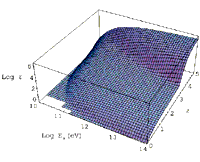Gravitational Astrophysics Research
Gravitational Astrophysics Research
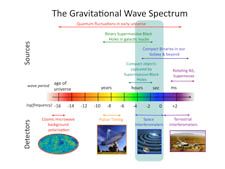
Staff in the Gravitational Astrophysics Lab are involved in many research areas, including:
- Numerical modeling of gravitational wave sources and their environments
- Design and technology development for the LISA mission
- Data analysis techniques for gravitational wave sources
- Theoretical modeling of high-energy astrophysics sources
Predicted by general relativity, gravitational waves are disturbances in spacetime produced by the motion of massive compact objects such as black holes, neutron stars, and white dwarfs. Observation of gravitational waves will provide a powerful new tool for understanding these objects, their environments, and the underlying physics of gravity itself.
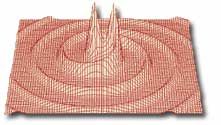
One major focus of the Gravitational Wave Astrophysics lab is to study the complex behavior of merging black holes using supercomputers, a field known as Numerical Relativity. By solving Einstein's gravitational field equations, researchers can track the evolution of a binary system of black holes as they spiral towards one another and collide. The simulations can also be used to extract gravitational waveforms from these systems that are essential for interpreting data from current and future gravitational wave detectors on the ground and in space.
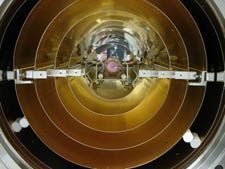
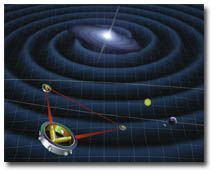 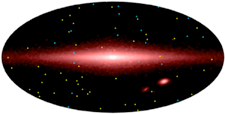 |
A second area of research within the Gravitational Wave Astrophysics Lab is the development of the Laser Interferometer Space Antenna (LISA), a space-based gravitational wave detector. A joint effort of NASA and the European Space Agency(ESA), LISA will study gravitational waves in the frequency band between 10-4 Hz and 10-1 Hz, a regime rich in astrophysical sources. In order to detect these waves, LISA must be able to measure displacements on the order of ten picometers (smaller than a hydrogen atom) between proof masses separated by five million kilometers (~13x the Earth-Moon distance). Researchers in the Gravitational Wave Astrophysics lab are developing and testing technologies that will enable these measurements. In addition, scientists are working with GSFC's engineers to refine the LISA mission concept.
Data analysis for gravitational wave detectors is another area of active research. LISA will detect signals from diverse astrophysical sources throughout the Universe, such as merging supermassive black holes, hierarchical mergers of intermediate mass black holes leading up to supermassive black holes, compact stellar objects spiraling into supermassive black holes in galactic nuclei, thousands of close binaries of compact objects in the Milky Way and possibly backgrounds of cosmological origin. The challenge for the LISA data analyst is to separate all of these signals from one another and extract as much information as possible about each one. With expertise in both gravitational wave source modeling and gravitational wave instruments, researchers in the Gravitational Wave Astrophysics Lab are well-positioned to make important contributions in data analysis.
In addition to the focus on gravitational waves, theorists in the Gravitational Wave Astrophysics group study astrophysical sources of cosmic rays, gamma rays, and x-rays. Much of the recent effort has been on gamma ray bursts, active galactic nuclei, pulsars and jets, with results relevant to a variety of missions, including Swift, HETE, Fermi, XMM, and Chandra. View a PowerPoint slide about this topic.

